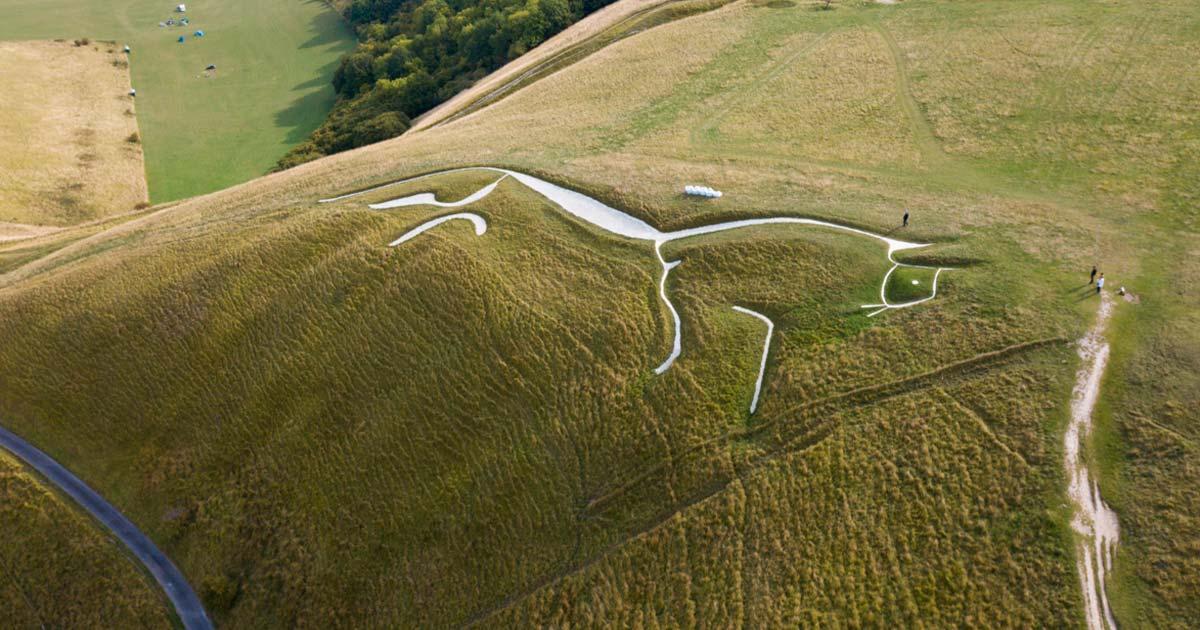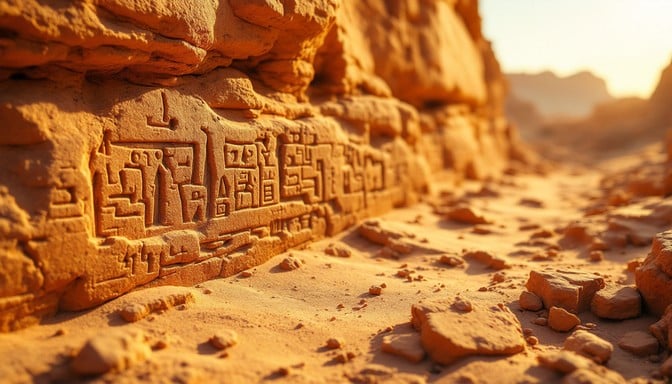Uffington White Horse: Ancient Geoglyph
Perched on the rolling hills of Oxfordshire, England, the Uffington White Horse geoglyph stretches 110 meters in length, etched into the chalk hillside in a stylized, elegant form. Dating back to the late Bronze Age, around 1000 BCE, this hill figure has endured for over three millennia, captivating scholars, locals, and visitors alike with its mysterious origin and purpose.
A Stylized Icon
Unlike the larger, more representational geoglyphs of the Americas, the Uffington White Horse is highly abstract. Its flowing lines suggest speed and movement, giving it an almost mythical presence. The figure is maintained through a traditional chalk “scouring” ritual, which ensures it remains visible through the centuries.

Possible Ritual and Cultural Significance
Archaeologists believe the horse may have been a symbol of tribal identity, fertility, or spiritual power. Its location atop a ridge ensures visibility across the surrounding valleys, perhaps signaling territorial claims or serving as a sacred landmark. Nearby Bronze Age burial mounds suggest that the figure was part of a wider ritual landscape, connecting the living with ancestors and deities.
Astronomical and Seasonal Connections
Some researchers propose that the orientation of the Uffington White Horse aligns with key solar and lunar events. The geoglyph may have functioned as a calendar marker, with sunrise and sunset positions during solstices highlighting significant times for ceremonies or agricultural planning. Its enduring presence underscores how prehistoric people merged art, landscape, and cosmic observation.
Preservation and Mystery
The Uffington White Horse is remarkable for its survival. Centuries of erosion, agricultural activity, and changing societies could have erased it, yet the dedication of local communities has preserved the chalk figure. Still, the exact reason for its creation remains uncertain. Was it a tribal emblem, a ritual object, or a guide for celestial observation? Its abstract form leaves room for multiple interpretations, sparking debates that continue today.
A Legacy Across the Ages
The Uffington White Horse geoglyph connects us to the Bronze Age imagination, revealing a culture that valued symbolism, landscape, and cosmic cycles. Standing before it, we witness a deliberate act of communication across millennia — a message in chalk that has survived the test of time, inviting us to ponder the intentions and beliefs of those who shaped it.
Additional reading:





